2019-04-25 - Nº 208
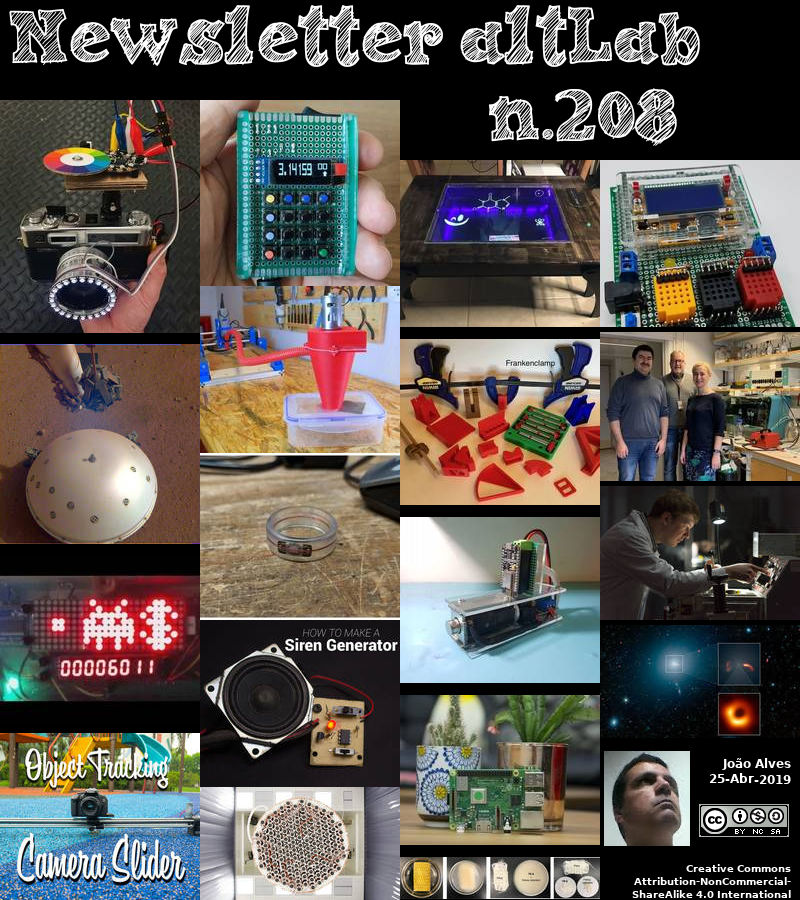
Editorial
Esta é a Newsletter Nº 208 que se apresenta com o mesmo formato que as anteriores. Se gostar da Newsletter partilhe-a!
Todas as Newsletters encontram-se indexadas no link.
Esta Newsletter tem os seguintes tópicos:
Faz hoje anos que nascia, em 1769, Marc Isambard Brunel. Este engenheiro e inventor franco-inglês resolveu o problema histórico do tunelamento subaquático. Um inventor prolífico, Brunel projectou máquinas para serrar e dobrar madeira, fazer sapatas, tricotar e imprimir. Como engenheiro civil, os seus projectos incluíam a ponte suspensa Île de Bourbon e as primeiras marinas flutuantes em Liverpool. Em 1818, no entanto, Brunel patenteou o escudo de tunelamento, um dispositivo que possibilitava a passagem de túneis com segurança através de camadas de água. Em 2 de Março de 1825, começaram as operações de construção de um túnel sob o rio Tamisa, entre Rotherhithe e Wapping. O Thames Tunnel foi finalmente inaugurado em 25 de Março de 1843. Tem uma secção transversal de ferradura gémea com altura de 7m, largura de 11m e comprimento total de 406m.
Faz também anos hoje que nascia, em 1849, Felix Klein. Este matemático alemão cuja síntese da geometria como o estudo das propriedades de um espaço que são invariantes sob um dado grupo de transformações, conhecido como Programa Erlanger, influenciou profundamente o desenvolvimento matemático. Ele criou a garrafa de Klein, uma superfície fechada unilateral. Uma garrafa de Klein não pode ser construída no espaço euclidiano. É melhor retratado como um cilindro que se volta através de si mesmo para se unir à outra extremidade. No entanto, esta não é uma superfície contínua em três espaços, pois a superfície não pode passar por si mesma sem uma descontinuidade. É possível construir uma garrafa de Klein no espaço não-euclidiano.
Faz igualmente anos hoje que nascia, em 1854, Charles Sumner Tainter. Este inventor americano de vários instrumentos de gravação de som, incluindo o fotofone (1880, com Alexander Graham Bell), um instrumento para transmitir o som a uma distância através da agência de luz, usando células sensíveis de selénio. Ele também desenvolveu o Graphophone (1881, patenteado em 1886; com Chichester A. Bell, primo de Alexander Graham Bell). Isto melhorou muito a superfície de papel alumínio e a ponta rígida usada por Thomas Edison. Tainter inventou um cilindro de papelão revestido de cera e uma caneta de gravação flexível que incorpora as ranhuras (em vez de estampagem) para obter uma melhor reprodução, tornando o fonógrafo e o dictografo comercialmente possíveis.
Faz também anos hoje que nascia, em 1874, Guglielmo Marconi. Este engenheiro electrotécnico italiano e inventor que inventou o telégrafo sem fio (1935) conhecido hoje como rádio. Prémio Nobel (1909). Em 1894, Marconi começou a experimentar as “Ondas Hertzianas”, as ondas de rádio que Heinrich Hertz produziu no seu laboratório alguns anos antes. Na falta de apoio do Ministério italiano dos Correios e Telégrafos, Marconi recorreu ao British Post Office. Demonstrações encorajadoras em Londres e na planície de Salisbury seguiram-se. Marconi obteve a primeira patente mundial de um sistema de telegrafia sem fio, em 1897, e abriu a primeira fábrica de rádio do mundo em Chelmsford, Inglaterra, em 1898. Em 1900, ele levou a sua famosa patente nº 7777 para “telegrafia sintonizada ou sintónica”.
Faz igualmente anos hoje que nascia, em 1900, Wolfgang Pauli. Este físico astro-americano foi laureado com o Prémio Nobel de Física em 1945 pela sua descoberta em 1925 do princípio de exclusão de Pauli, que afirma que num átomo dois electrões não podem ocupar o mesmo estado quântico simultaneamente. Este princípio relaciona claramente a teoria quântica com as propriedades observadas dos átomos.
Por fim, faz anos hoje que nascia, em 1903, Andrey Kolmogorov. Este matemático russo cujos postulados básicos da teoria da probabilidade continuaram a ser parte integrante da análise. Este trabalho teve diversas aplicações, como seu estudo do movimento dos planetas (1954), ou o fluxo de ar de um motor a jacto (1941). Na topologia, ele investigou grupos de cohomologia. Ele fez uma grande contribuição para responder à parte de probabilidade do sexto problema de Hilbert e resolveu (1957) o Décimo Terceiro Problema de Hilbert.
Nesta semana que passou ficámos a saber que a NASA registou o primeiro ruído sísmico em Marte. A partir da Insight o fraco sinal sísmico, detectado pelo instrumento Sísmico de Experimentação para Estrutura Interior (SEIS), foi registado a 6 de Abril, o dia marciano de 128º, ou sol. Este é o primeiro tremor registado que parece ter vindo de dentro do planeta, em oposição a ser causado por forças acima da superfície, como o vento. Os cientistas ainda estão examinando os dados para determinar a causa exacta do sinal.
Na Newsletter desta semana apresentamos diversos projetos de maker. É apresentada a revista MagPI nº 81 e o livro "Wearable Tech Projects".
 João Alves ([email protected])
João Alves ([email protected])
O conteúdo da Newsletter encontra-se sob a licença  Creative Commons Attribution-NonCommercial-ShareAlike 4.0 International License.
Creative Commons Attribution-NonCommercial-ShareAlike 4.0 International License.
Novidades da Semana

NASA's InSight Detects First Likely 'Quake' on Mars
"NASA's Mars InSight lander has measured and recorded for the first time ever a likely "marsquake." The faint seismic signal, detected by the lander's Seismic Experiment for Interior Structure (SEIS) instrument, was recorded on April 6, the lander's 128th Martian day, or sol. This is the first recorded trembling that appears to have come from inside the planet, as opposed to being caused by forces above the surface, such as wind. Scientists still are examining the data to determine the exact cause of the signal. "InSight's first readings carry on the science that began with NASA's Apollo missions," said InSight Principal Investigator Bruce Banerdt of NASA's Jet Propulsion Laboratory (JPL) in Pasadena, California. "We've been collecting background noise up until now, but this first event officially kicks off a new field: Martian seismology!"" [...]
Outras Notícias

9th Gen Intel Core: The Most Powerful Laptop Platform
"Today, Intel launched the most powerful generation of Intel® Core™ mobile processors ever: the new 9th Gen Intel® Core™ mobile H-series processors, designed for gamers and creators who want to push their experience to the next level. There are 580 million enthusiast PC gamers and 130 million PC-based content creators today1 who care about raw performance as much as they do responsiveness of their PC. They require PCs that can handle everything from demanding AAA games to taxing creative workloads like editing, rendering and transcoding massive 4K video – all while on the go. The 9th Gen Intel Core mobile processors deliver desktop-caliber performance in a mobile form factor and feature amazing performance; the fastest, most reliable wireless with Intel® Wi-Fi 6 AX200 (Gig+); the most versatile wired connectivity with Thunderbolt™ 3; and support for Intel® Optane™ memory technology. How It Performs: At the top of the stack is the 9th Gen Intel Core i9-9980HK processor, the first Intel® Core™ i9 mobile processor with up to 5 GHz2 with Intel® Thermal Velocity Boost, 8 cores and 16 threads, and supporting 16MB of Intel® Smart Cache. The 9th Gen Intel Core mobile processors are designed for the most demanding workloads to deliver: A full range of processors including Intel Core i5, i7 and the unlocked Intel Core i9-9980HK for even more performance." [...]

The Giant Galaxy Around the Giant Black Hole
"On April 10, 2019, the Event Horizon Telescope (EHT) unveiled the first-ever image of a black hole's event horizon, the area beyond which light cannot escape the immense gravity of the black hole. That giant black hole, with a mass of 6.5 billion Suns, is located in the elliptical galaxy Messier 87 (M87). EHT is an international collaboration whose support in the U.S. includes the National Science Foundation. This image from NASA's Spitzer Space Telescope shows the entire M87 galaxy in infrared light. The EHT image, by contrast, relied on light in radio wavelengths and showed the black hole's shadow against the backdrop of high-energy material around it. Located about 55 million light-years from Earth, M87 has been a subject of astronomical study for more than 100 years and has been imaged by many NASA observatories, including the Hubble Space Telescope, the Chandra X-ray Observatory and NuSTAR." [...]

Bosque Programming Language
"The Bosque programming language is designed for writing code that is simple, obvious, and easy to reason about for both humans and machines. The key design features of the language provide ways to avoid accidental complexity in the development and coding process. The goal is improved developer productivity, increased software quality, and enabling a range of new compilers and developer tooling experiences. To simplify collaboration with other researchers and the wider developer community this project is setup around an open-source (MIT) licensed github repository. This project welcomes community contributions including, issues, comments, pull requests and research based on or enhancing the Bosque language. " [...]

Google completes subsea cable to Chile in global cloud push
"Alphabet Inc’s Google has completed a 10,000-kilometer (6,214-mile) subsea cable linking the coast of California to Chile, a key step in its plans to bolster its global cloud computing infrastructure. The cable, dubbed the “Curie” project, arrived at the Chilean port of Valparaiso on Tuesday, Google said in a post on their regional website. The cable starts in Los Angeles before making its way to South America under the Pacific Ocean. Google has been investing heavily in technology infrastructure, especially in vital submarine cables connecting up its global network. Other links include a cable connecting the United States to Denmark and Ireland, and another linking hubs in Asia. Chilean Minister of Transport and Telecommunications Gloria Hutt, in a statement to mark the cable’s arrival, said the new link would “provide advantages and opportunities for millions of Internet users” in Chile." [...]

Tesla Raises the Bar for Self-Driving Carmakers
"In unveiling the specs of his new self-driving car computer at this week’s Tesla Autonomy Day investor event, Elon Musk made several things very clear to the world. First, Tesla is raising the bar for all other carmakers. Second, Tesla’s self-driving cars will be powered by a computer based on two of its new AI chips, each equipped with a CPU, GPU, and deep-learning accelerators. The computer delivers 144 trillion operations per second (TOPS), enabling it to collect data from a range of surround cameras, radars and ultrasonics and power deep neural network algorithms. Third, Tesla is working on a next-generation chip, which says 144 TOPS isn’t enough. At NVIDIA, we have long believed in the vision Tesla reiterated: self-driving cars require computers with extraordinary capabilities." [...]
Ciência e Tecnologia

Lasers make magnets behave like fluids
"For years, researchers have pursued a strange phenomenon: When you hit an ultra-thin magnet with a laser, it abruptly de-magnetizes. Imagine the magnet on your refrigerator suddenly falling off. Now, scientists at CU Boulder are digging into how magnets recover from that change, regaining their properties in a fraction of a second. According to a study published this week in Nature Communications, zapped magnets actually behave like fluids. Their magnetic properties begin to form “droplets,” similar to what happens when you shake up a jar of oil and water. To find that out, CU Boulder’s Ezio Iacocca, Mark Hoefer and their colleagues drew on mathematical modeling, numerical simulations and experiments conducted at Stanford University’s SLAC National Accelerator Laboratory." [...]
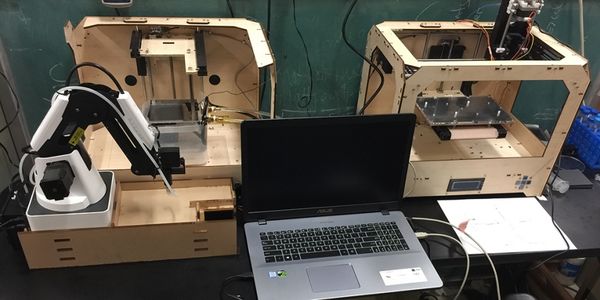
Mass-producing biomaterials
"More than 113,000 people are currently on the national transplant list. And with a shortage of donors, this means that about 20 people will die every day while waiting for an organ, according to the U.S. Department of Health. But this could change thanks to researchers at UC Berkeley, who have developed a device that may be key to the viability of bioprinting, an extension of 3D printing that allows living tissue, bone, blood vessels and even whole organs to be printed on demand. A paper on this work was recently published in the Journal of Medical Devices. Currently, there are two major hurdles standing in the way of organ printing. Because living cells and functioning organs require specialized temperature and chemical conditions to survive, cells deteriorate during the actual 3D printing of a large organ because the process is too slow." [...]
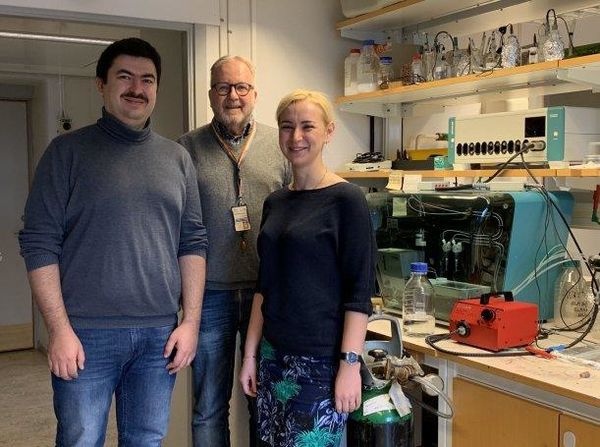
Bacteria could become a future source of electricity
"In recent years, researchers have tried to capture the electrical current that bacteria generate through their own metabolism. So far, however, the transfer of the current from the bacteria to a receiving electrode has not been efficient at all. Now, researchers from institutions including Lund University have achieved a slightly more efficient transfer of electrical current. One of society’s greatest challenges is to meet the need for renewable and sustainable energy. Interest is growing around one potential such energy source: bacteria. “We pick up electrons from the bacterium and transfer them to an electrode." [...]

Extremely accurate measurements of atom states developed for quantum computing
"A new method allows the quantum state of atomic “qubits” — the basic unit of information in quantum computers — to be measured with 20 times less error than was previously possible, without losing any atoms. Accurately measuring qubit states, which are analogous to the one or zero states of bits in traditional computing, is a vital step in the development of quantum computers. A paper describing the method by researchers at Penn State appears March 25, 2019 in the journal Nature Physics. “We are working to develop a quantum computer that uses a three-dimensional array of laser-cooled and trapped cesium atoms as qubits,” said David Weiss, professor of physics at Penn State and the leader of the research team. “Because of how quantum mechanics works, the atomic qubits can exist in a ‘superposition’ of two states, which means they can be, in a sense, in both states simultaneously. To read out the result of a quantum computation, it is necessary to perform a measurement on each atom." [...]
Semiconductor scientists discover effect that was thought impossible
"A physical effect known as superinjection underlies modern light-emitting diodes (LEDs) and lasers. For decades this effect was believed to occur only in semiconductor heterostructures — that is, structures composed of two or more semiconductor materials. Researchers from the Moscow Institute of Physics and Technology have found superinjection to be possible in homostructures, which are made of a single material. This opens up entirely new prospects for the development of light sources. The paper came out Feb. 21 in the journal Semiconductor Science and Technology. Semiconductor light sources, such as lasers and LEDs, are at the core of modern technology." [...]

Building a Printing Press for New Quantum Materials
"Scientists at Brookhaven Lab's Center for Functional Nanomaterials are developing an automated system to synthesize entirely new materials made from stacked atomically thin two-dimensional sheets and to characterize their exotic quantum properties Checking out a stack of books from the library is as simple as searching the library’s catalog and using unique call numbers to pull each book from their shelf locations. Using a similar principle, scientists at the Center for Functional Nanomaterials (CFN)—a U.S. Department of Energy (DOE) Office of Science User Facility at Brookhaven National Laboratory—are teaming with Harvard University and the Massachusetts Institute of Technology (MIT) to create a first-of-its-kind automated system to catalog atomically thin two-dimensional (2-D) materials and stack them into layered structures. Called the Quantum Material Press, or QPress, this system will accelerate the discovery of next-generation materials for the emerging field of quantum information science (QIS). Structures obtained by stacking single atomic layers (“flakes”) peeled from different parent bulk crystals are of interest because of the exotic electronic, magnetic, and optical properties that emerge at such small (quantum) size scales. However, flake exfoliation is currently a manual process that yields a variety of flake sizes, shapes, orientations, and number of layers. Scientists use optical microscopes at high magnification to manually hunt through thousands of flakes to find the desired ones, and this search can sometimes take days or even a week, and is prone to human error." [...]

Snake-inspired robot slithers even better than predecessor
"Programmable kirigami metamaterials enable responsive surfaces and smart skins Bad news for ophiophobes: Researchers from the Harvard John A. Paulson School of Engineering and Applied Sciences (SEAS) have developed a new and improved snake-inspired soft robot that is faster and more precise than its predecessor. The robot is made using kirigami — a Japanese paper craft that relies on cuts to change the properties of a material. As the robot stretches, the kirigami surface “pops up” into a 3D-textured surface, which grips the ground just like snake skin. The first-generation robot used a flat kirigami sheet, which transformed uniformly when stretched. The new robot has a programmable shell, meaning the kirigami cuts can pop up as desired, improving the robot’s speed and accuracy. The research was published in the Proceedings of the National Academy of Sciences." [...]
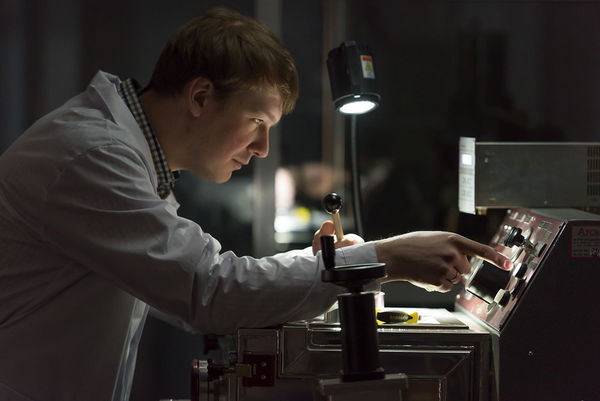
Scientists develop low-cost energy-efficient materials
"An international team of scientists from the National University of Science and Technology “MISIS” (NUST MISIS), Tianjin University (China), as well as from Japan and the United States has developed new energy-efficient iron-based alloys which combine high mechanical and magnetic properties with low cost and open up new opportunities for industry. The research results are published in the Journal of Alloys and Compounds. Today, scientists from different countries are facing the task of creating new materials which would help to reduce losses in electricity transmission and transformation. This would lead to energy savings and help to reduce emissions of hazardous gases during production (including CO2 — one of the key factors for the greenhouse effect). Electronic devices could be reduced in size by increasing efficiency. To solve this problem, the international team of scientists engaged in the development of amorphous softmagnetic alloys in low-cost alloy systems such as Fe-Si-B-Nb-Cu (iron-silicon-boron-niobium-copper)." [...]
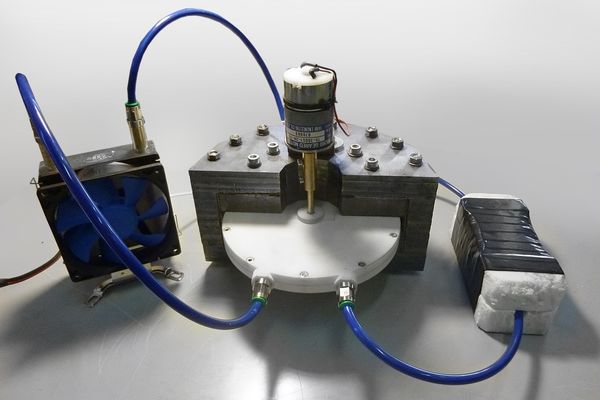
Magnet vs. Freon: Scientists Invent a Magnetic Refrigerator, Which Is 30-40% More Efficient than Usual
"A fundamentally new refrigerator has been developed by researchers from the National University of Science and Technology MISIS and Tver State University — it is based on a solid-state magnetic system that gives 30-40% odds to the gas-compressor cycle of a conventional refrigerator in terms of energy efficiency. One of the main objects of our apartments — the refrigerator — consumes up to 20-40% of all electricity. On a global scale, technology to create cold, meaning industrial and domestic refrigerators, home air conditioners and automotive air conditioners is a very expensive pleasure. According to expert estimates, all these devices spend up to 10% of the world’s electricity as a whole. The scientific team of physicists and engineers of the NUST MISIS Department for Functional Nanosystems & High-Temperature Materials and Tver State University solved the problem of efficient cold generation by proposing a new cooling system — a magnetic one. In a conventional refrigerator, cooling occurs due to the sudden evaporation of freon (or other refrigerants), which passes into a gaseous state." [...]
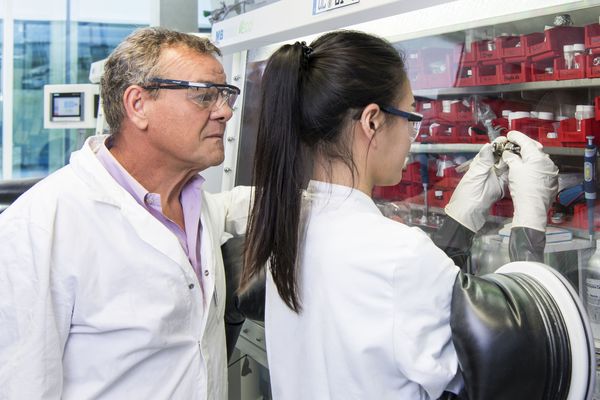
Sodium-Ion Batteries: from Materials Development to Technology Innovation
"Within the TRANSITION Project, KIT, HIU and partners will develop powerful Sodium-ion battery prototypes for future application in electro-mobility and stationary energy storage. To provide an environmentally friendly, cost-effective and high-performing alternative to lithium-ion batteries – that’s the goal for the next generation of sodium-ion batteries. The technically relevant active materials and electrolytes are currently being designed and optimized by scientists of the Helmholtz Institute Ulm (HIU) of the Karlsruhe Institute of Technology, the Center for Solar Energy and Hydrogen Research Baden-Württemberg (ZSW) and the Friedrich-Schiller-University Jena (FSU). Within the TRANSITION project, they are developing solutions to ensure the technology transfer of sodium-ion batteries to the industrial level, making a significant contribution to a more sustainable energy storage market in Germany. The project is funded by the German Federal Ministry of Education and Research (BMBF) with EUR 1.15 million for a duration of three years. The driving force of the TRANSITION project is to make a central contribution to a more sustainable energy storage strategy in Germany." [...]

How to use gravitational waves to measure the expansion of the universe
"Ripples in spacetime lead to new way to determine size and age of universe On the morning of Aug. 17, 2017, after traveling for more than a hundred million years, the aftershocks from a massive collision in a galaxy far, far away finally reached Earth. These ripples in the fabric of spacetime, called gravitational waves, tripped alarms at two ultra-sensitive detectors called LIGO, sending texts flying and scientists scrambling. One of the scientists was Prof. Daniel Holz at the University of Chicago. The discovery had provided him the information he needed to make a groundbreaking new measurement of one of the most important numbers in astrophysics: the Hubble constant, which is the rate at which the universe is expanding. The Hubble constant holds the answers to big questions about the universe, like its size, age and history, but the two main ways to determine its value have produced significantly different results. Now there was a third way, which could resolve one of the most pressing questions in astronomy—or it could solidify the creeping suspicion, held by many in the field, that there is something substantial missing from our model of the universe." [...]
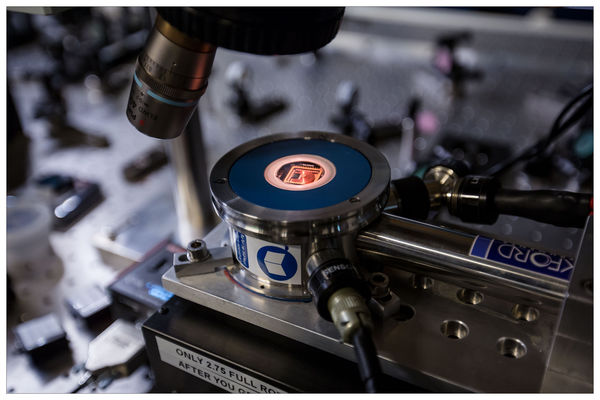
Nanocomponent is a quantum leap for Danish physicists
"University of Copenhagen researchers have developed a nanocomponent that emits light particles carrying quantum information. Less than one-tenth the width of a human hair, the miniscule component makes it possible to scale up and could ultimately reach the capabilities required for a quantum computer or quantum internet. The research result puts Denmark at the head of the pack in the quantum race. Teams around the world are working to develop quantum technologies. The focus of researchers based at the Center for Hybrid Quantum Networks (Hy-Q) at the University of Copenhagen’s Niels Bohr Institute is on developing quantum communication technology based on light circuits, known as nanophotonic circuits. The UCPH researchers have now achieved a major advancement." [...]
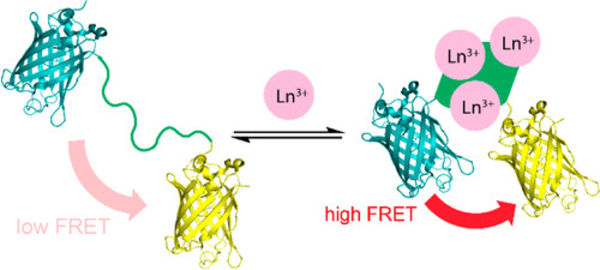
New sensor detects rare metals used in smartphones
"A more efficient and cost-effective way to detect lanthanides, the rare earth metals used in smartphones and other technologies, could be possible with a new protein-based sensor that changes its fluorescence when it binds to these metals. A team of researchers from Penn State developed the sensor from a protein they recently described and subsequently used it to explore the biology of bacteria that use lanthanides. A study describing the sensor appears online in the Journal of the American Chemical Society. “Lanthanides are used in a variety of current technologies, including the screens and electronics of smartphones, batteries of electric cars, satellites, and lasers,” said Joseph Cotruvo Jr., assistant professor and Louis Martarano Career Development Professor of Chemistry at Penn State and senior author of the study. “These elements are called rare earths, and they include chemical elements of atomic weight 57 to 71 on the periodic table. Rare earths are challenging and expensive to extract from the environment or from industrial samples, like waste water from mines or coal waste products." [...]
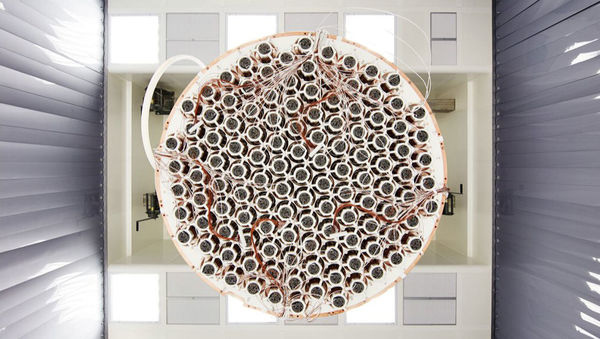
Dark Matter Detector Observes Rarest Event Ever Recorded
"How do you observe a process that takes more than one trillion times longer than the age of the universe? The XENON Collaboration research team did it with an instrument built to find the most elusive particle in the universe – dark matter. In a paper to be published tomorrow in the journal Nature, researchers announce that they have observed the radioactive decay of xenon-124, which has a half-life of 18 sextillion (that’s 18 followed by 21 zeros) years. “We actually saw this decay happen. It’s the longest, slowest process that has ever been directly observed, and our dark matter detector was sensitive enough to measure it,” said Ethan Brown, an assistant professor of physics at Rensselaer, and co-author of the study. “It’s an amazing to have witnessed this process, and it says that our detector can measure the rarest thing ever recorded.” The XENON Collaboration runs XENON1T, a 1,300-kilogram vat of super-pure liquid xenon shielded from cosmic rays in a cryostat submerged in water deep 1,500 meters beneath the Gran Sasso mountains of Italy." [...]

New robust device may scale up quantum tech, researchers say
"Study shows evidence of topological superconductivity in planar structures Researchers have been trying for many years to build a quantum computer that industry could scale up, but the building blocks of quantum computing, qubits, still aren’t robust enough to handle the noisy environment of what would be a quantum computer. A theory developed only two years ago proposed a way to make qubits more resilient through combining a semiconductor, indium arsenide, with a superconductor, aluminum, into a planar device. Now, this theory has received experimental support in a device that could also aid the scaling of qubits. This semiconductor-superconductor combination creates a state of “topological superconductivity,” which would protect against even slight changes in a qubit’s environment that interfere with its quantum nature, a renowned problem called “decoherence.” The device is potentially scalable because of its flat “planar” surface – a platform that industry already uses in the form of silicon wafers for building classical microprocessors. The work, published in Nature, was led by the Microsoft Quantum lab at the University of Copenhagen’s Niels Bohr Institute, which fabricated and measured the device. The Microsoft Quantum lab at Purdue University grew the semiconductor-superconductor heterostructure using a technique called molecular beam epitaxy, and performed initial characterization measurements." [...]

Dynamic polymer network points the way to truly recyclable plastics
"Crosslinked polymer networks known as thermoset plastics have many applications, but can’t be reshaped or recycled. A thermoset with reorganizable crosslinks retains its useful properties, but has recyclability built in. The fact that most currently used plastics cannot be easily recycled has produced severe environmental problems, caused considerable losses to the global economy and depleted finite natural resources1,2. Of the most widely used plastics today, thermosets are of great interest for high-performance applications, but are particularly impractical for recycling because they cannot be reprocessed using heat or solvents. Writing in Nature Chemistry, Christensen et al.3 report thermosets formed using covalent links known as diketoenamines, which can be reorganized within the material’s polymer network. Remarkably, the diketoenamines allow the plastics to be recycled in an energy-efficient process to regenerate pristine monomers, which can then be used to make thermosets that are almost identical to the original material." [...]
Documentação
A documentação é parte essencial do processo de aprendizagem e a Internet além de artigos interessantes de explorar também tem alguma documentação em formato PDF interessante de ler. Todos os links aqui apresentados são para conteúdo disponibilizado livremente pelo editor do livro.

Wearable Tech Projects
"We've gathered up the best bits of wearable technology from HackSpace magazine and packed it into a 164 page book brimming with fashion, cosplay, jewellery and more. You'll learn to sew, wire and program your clothes to make them light up, play music and even control games. " [...]

The MagPI 81
"Build a Raspberry Pi project in this month’s edition of The MagPi. Discover the best tips from professional makers, get started with the right kit, and get inspiration for your next project. Plus! All this inside The MagPi 81 How to build a Raspberry Pi project Expert advice from the maker community on physical computing Build a car computer Install a Raspberry Pi in your automobile Electronics with GPIO Zero 1.5 Hack an electronic doorbell and learn all about the latest version of GPIO Zero Make a games console Step-by-step guide to set up RetroPie on a Raspberry Pi Set off party poppers with servo motors A fun party trick that uses code and motors The top 10 laptop kits Turn your Pi into a full laptop computer Create a GUI interface Use GTK in C to give your programs an interface Plus! Win 1 of 10 DAC+ ADC kits Your chance to win audio kit for the Raspberry Pi" [...]
Projetos Maker
Diversos Projetos interessantes.
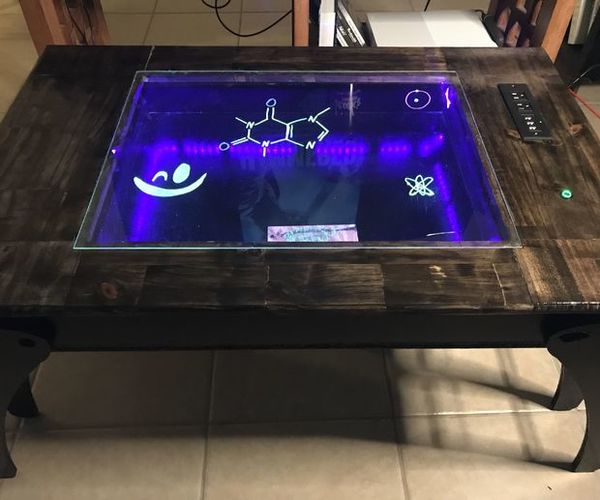
Lightboard Coffee Table and Art Display
"This project had a lot of "Winging It" involved. I am immensely happy with how it turned out but several things went sideways, which you will see. I'll tell you how I did it and then tell you how to make it better and easier than I did. This project does use UV LEDs so it's best not to stare directly into them. Have the same caution when using this that you would using a blacklight. I don't plan on sitting directly over it or even leaving it on for significant periods of time." [...]

Arduino Controlled Robotic Arm W/ 6 Degrees of Freedom
"I am a member of a robotics group and each year our group participates in an annual Mini-Maker Faire. Beginning in 2014, I decided to build a new project for each year's event. At the time, I had about a month before the event to put something together and had no idea what I wanted to do. A fellow member posted a link to "an interesting open source robotic arm build" that peaked my interest. The plans were just an arm with no controls or a controller. Considering my time constraints, it seemed like a really good starting point." [...]

3D Printed Vacuum Cleaner for a CNC Machine
"As I started to use my Dremel CNC more often I noticed that after milling wood and MDF there is a lot of thin dust everywhere around. I also faced a problem with aluminum chips that got stuck in a lead screw, so I added a cover for the lead screws but I knew that the best solution would be attaching a vacuum cleaner to the machine. I have a really big and loud workshop vacuum cleaner that is way too powerful for this task. While I was scrolling through posts in Dremel CNC builders group on Facebook I noticed Jan's post about his 3D printed vacuum cleaner. I thought that it's a really cool idea to build a small vacuum cleaner that I can put next to my CNC machine and keep it on all the time when CNC is milling. So I opened Fusion 360 at 1 AM and 2 hours later my very own 3D printed vacuum cleaner was ready to be printed." [...]
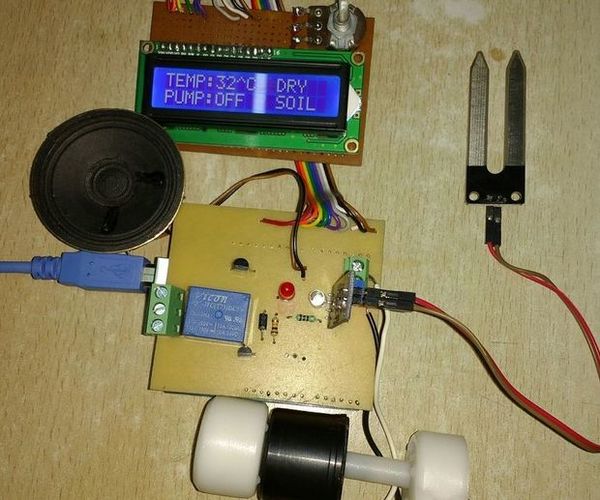
How to Make Automatic Irrigation System Using Arduino
"In this Instructables, I will show you how to build and implement an automatic irrigation system which can sense the water content in the soil and automatically irrigate your garden. This system can be programmed for different crop requirements and seasonal variations. This system is best suited for drip irrigation technique. I have also tested the system for different soil conditions and water availability. Watch the linked video for easy understanding. This System will help you to irrigate your backyard Garden or your Indoor Garden automatically and you need not to worry about watering your favorite plants in your busy schedule." [...]
Object Tracking Camera Slider With Rotational Axis. 3D Printed & Built on the RoboClaw DC Motor Controller & Arduino
"This project has been one of my favorite projects since I got to combine my interest of video-making with DIY. Ive always looked at and wanted to emulate those cinematic shots in movies where a camera moves across a screen while panning to track the object. This adds a very interesting depth effect to an otherwise 2d video. Wanting to replicate this without spending thousands of dollars on Hollywood gear, I decided to build such a camera slider myself. The whole project is built on parts you can 3D print, and the code runs on the popular Arduino board. All the project files such as the CAD files & code are available for download down below." [...]

Plant Monitor Using ESP32 Thing and Blynk
"The goal of this project is to create a compact device to monitor the conditions of a houseplant. The user will be able to check the soil moisture level, humidity level, temperature, and the "feels-like" temperature from anywhere on a smartphone using the Blynk App. Additionally, the user will receive an email alert when the plant needs watered or when the other conditions become unsuitable for the plant. " [...]
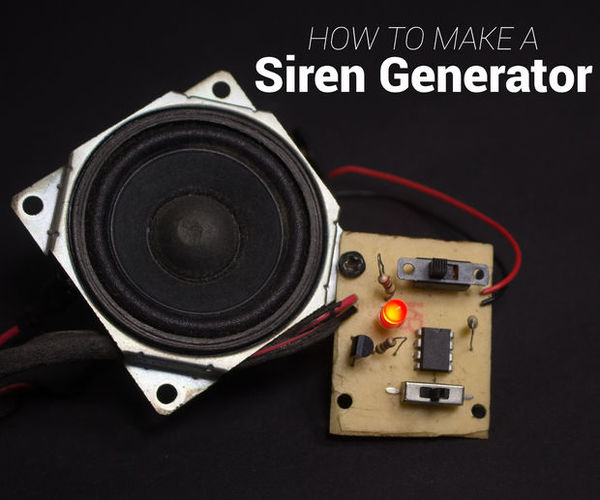
How to Make a Siren Generator
"Learn How to Make a DIY Electronic Siren Generator circuit that can produce police car siren, emergency ambulance siren & fire brigade sound using the IC UM3561a Siren Tone Generator. The circuit only requires a few components and can be put together in a couple of hours. Since the siren is multipurpose, it can be easily configured to suit it's vehicle's siren requirements. " [...]
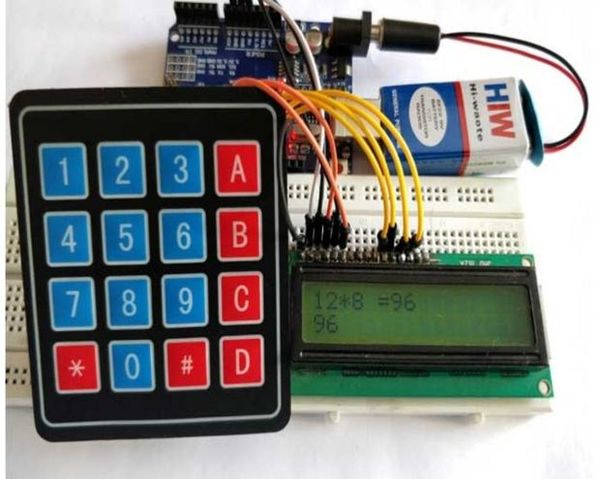
Arduino Calculator
"Programming is always fun and Arduino is a wonderful platform if you are just getting started with Embedded programming. In this tutorial we will build our own calculator with Arduino. The values can be sent in through a keypad (44 keypad) and result can be viewed on a LCD screen (162 Dot-matrix). This calculator could perform simple operations like Addition, Subtraction, Multiplication and Division with whole numbers. But once you understand the concept you can implement even scientific functions with Arduinos built in functions.At the end of this project you will know how to use a 16x2 LCD and Keypad with Arduino and also how easy it is to program for them using the readily available libraries. You will also understand how to program your Arduino for accomplishing a particular task." [...]
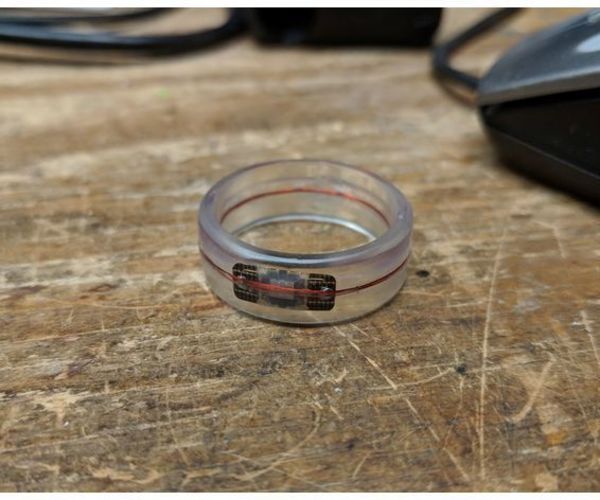
RFID NFC Tap and Go Ring for Credit Card Payment
"The idea behind this project is that if you have an RFID credit card, you can tell your bank that you need a replacement card, then once you have that second card, you can dissolve it in acetone, take out the RFID chip, solder a new antenna to it, glue that assembly to an inner frame, then put that assembly in a mold made from the full-size ring, pour resin around it, then have a ring that will let you pay at any establishment that accepts RFID credit cards (you'll be able to use your ring at pretty much anywhere that accepts google/apple pay) without you needing to take out your wallet. To find out if your card has RFID contactless payment options, look for this symbol on the front or back: https://imgur.com/rQDpAac If it doesn't, you can also call your bank and see if they have them available. My card did not have RFID but they were able to send me one that did when I called and asked. I'd suggest reading through everything in this instructable before starting in on this. " [...]
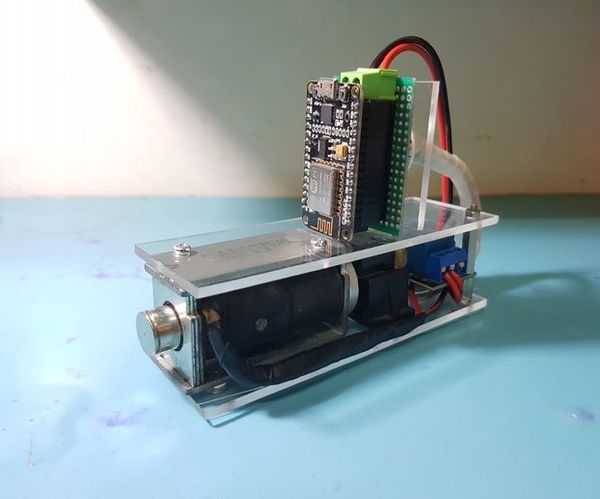
D.I.Y Normal Close Safety Lock
"The idea of this small project is to make a normally closed - electromagnetic safety lock that can be controlled by mobile phone through WIFI/4G network. Even if without a power source, the safety lock will still remain in locked state due to force from 3 contact blocks at back side of lock. " [...]
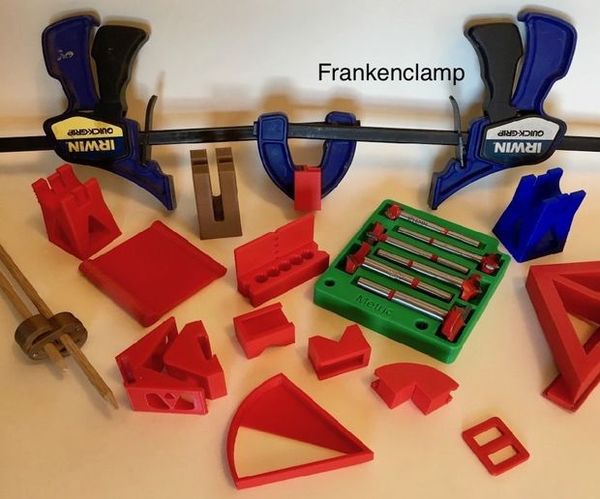
More 3D Printed Gadgets for Woodworking
"A great collection of simple 3d printed gadgets to make life easier in your woodworking shop. This is a follow-up on my prior Instructable to make useful 3D printed gadgets for your workshop. You can view the original Instructable here. Some of the gadgets may be commercially available; so decide for yourself whether you want to make your own. Other gadgets are custom designed/build for my woodworking shop and my specific equipment. All gadgets were designed in Autodesk Fusion 360; the resulting stl files are included for 3d printing, and free for you to use or modify." [...]
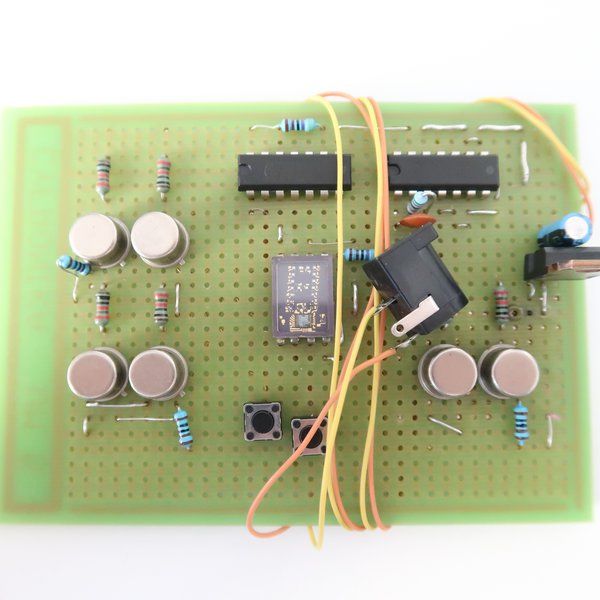
Pseudo random number generator
"The pseudo random generator made from transistors, 4000 and 74HC series ICs. Simple 3 bit pseudo random generator with graphical presentation, made from few transistors and 4000 and 74HC series ICs. " [...]

How to Build Plant Observatory Using Azure IoT and Node.js
"Demo of Plant Monitoring System using Azure IoT hub for transmission and Elasticsearch for indexing gathered data. This project is a quick demonstration of a demo about plant observation system. The system should gain valuable information about plants from diverse sensors such as photoresistors, moisture sensors, temperature/humidity sensors. These sensors are connected to the device, which communicates events to the back-end application for later processing and analysis. Here we will use Azure IoT Hub to let the device to communicate with our back-end app. In that device we will randomly generate telemetry, so it's make possible to test the system without a real hardware parts and sensors." [...]

Color Spinner Camera Ring Light
"Photography lighting is a tricky business. This project aims to create an easy add-on that can work with any camera, film or digital, to illuminate subjects and scenes with custom colors. To add an extra fun element to this ring light, we can select the color by turning a color wheel, the color that is above the light sensor on the CircuitPlayground will be the color displayed! This project is a fun introduction to soldering and coding, and is easy to adapt for different lighting purposes. " [...]

Homemade TV B-Gone
"Make a remote to turn off any TV with an Arduino and some simple electronics! In this tutorial we’re going to make an Arduino TV B-Gone and it's super simple. If you’re not familiar with a TV B-Gone, it’s a device that uses a small micro-controller to send the IR off codes for every TV make and model on the planet. This is a super handy little device to have around as it just turns the TV off. No looking for the right remote. The TV B-Gone is also handy for venues like sports bars and the like." [...]

Arduino DIY 6x6 Matrix T-shirt
"Welcome to my first instructables! I want to show you how I made my own LED matrix T-shirt for about 50 and how to show nice animations and pictures on it using the fantastic LED matrix control software by Tyler Jones. At first I did an 6x8 pixel matrix, but later I changed to 6x6 sice it would't work with the LMCS. I am writing this Instrucables after I had it done, so please be excuse me for missing photos. The T-shirt is even washable, you can take the LED strips out. If you have any questions please let me know!" [...]
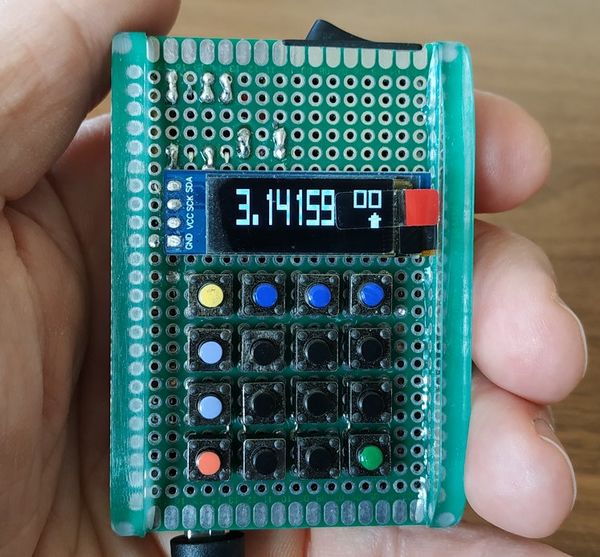
SCOTT - Scientific RPN Calculator with OLED display and ATTINY85 microcontroller
"To examine how much "calculator power" a simple microcontroller like the ATTINY85 is able to perform was already the intention of ScArY (www.github.com/zooxo/scary). Unfortunately ScArY was based on a premanufactured development board (QYF-TM1638) and was restricted to a 7 segment display. Beside an ATTINY85 microcontroller SCOTT is based on an OLED display and a 16 key one wire keypad. As SCOTT is powered by one 3V battery only a good power management is essential. Two of the five regular I/O-pins of the ATTINY are used to control the display (I2C communication) and one (analog) pin is used to handle the one wire keypad. So far two pins are available for further developments (i.e." [...]
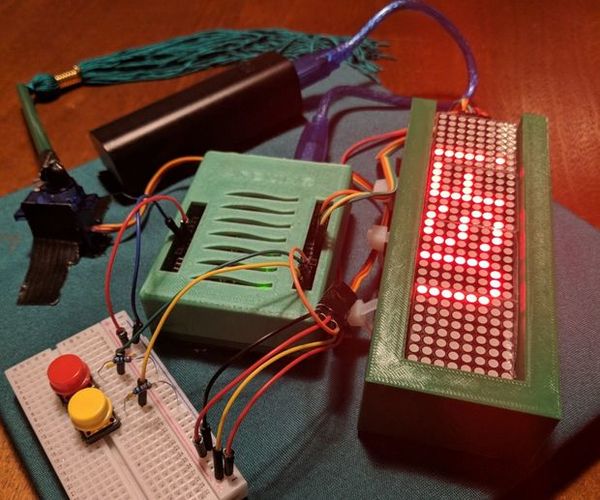
Epic Graduation Cap
"I was attending the graduation of my friend last May and my friend leaned over to me and said "Hey Rachel, you should do an Arduino project so that you're really easy to spot when you graduate." So I did just that. The cap has an 8 by 32 grid of LED's that scrolls the message "Hi mom, I'm graduating!" The tassel of the cap is controlled by a servo motor to make your tassel go from right to left when the time comes to graduate (when you press the red button). Also, when the tassel moves over it changes the scrolling message to be "Yay! I graduated"." [...]

Arduino Slot Machine
"This project is my implementation of an alien themed slot machine using two ATmega328P-PU micro-controllers. The slot machine is for entertainment and educational purposes only. I tried my best to make the game simulate a real slot machine as closely as possible. The project is completely built. An enclosure was added after the parts arrived from China and I soldered everything up. The project took about a month for me to build in my spare time." [...]
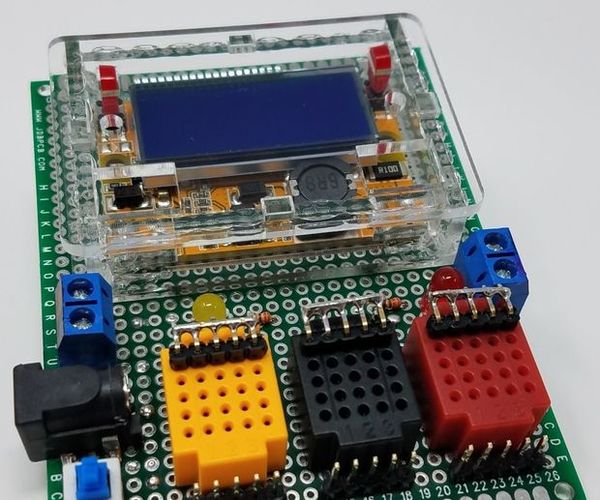
Convenient Jumper Wire Power Supply
"This is a small adjustable (0 to 16.5V) power supply module modified to make connections to solderless breadboards and various modules easier. The module has an LCD voltage and current (to 2A) display, but this project adapts the module with a few simple parts to make it easier to use jumper wires to power projects. I'd like to credit my dad for a rule: "If you are going to do things the same three times, make a tool." I'm sure he taught me that, but over my lifetime I've watched him NOT use that rule. Usually, projects would turn out better if he had followed that rule. As a Dad myself, well, I need my son to remind me, too." [...]
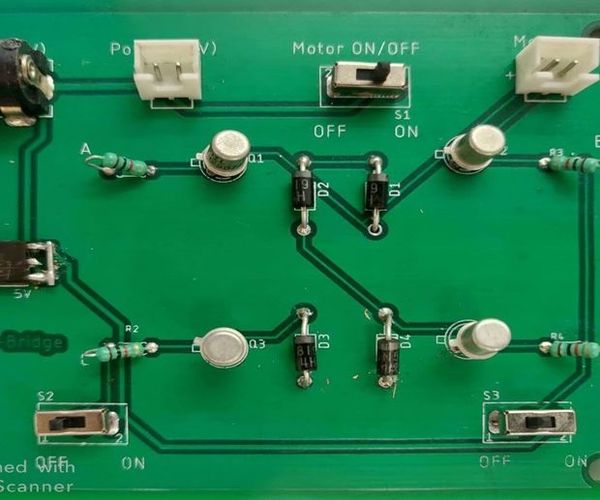
DC Motor Driving Using H Bridge
"Hello guys! In this instructable, I will show you how to build an H Bridge - a simple electronic circuit which enables us to apply voltage to load in either direction. It is commonly used in robotics application to control DC Motors. By using H Bridge we can run DC Motor in clockwise or anticlockwise directions. " [...]

Remotely Control Home Electronics with PIC-IoT WG
"This tutorial uses a Relay Click and the PIC-IoT WG to control a fan, lamp, or any other wired device from the cloud. This demo was created for Microchip's booth at Google Next 2019. Attendees in San Francisco used a simple Google Cloud interface to control a lamp located at a residence in Phoenix (over 700 miles away). We like this demo not just because it terrified my roommates, but also because it is very simple. The PIC-IoT WG board is pre-configured to securely connect to Google Cloud Platform out of the box. Upon startup, you're directed to a sandbox account, which contains a simple interface with controls for you to learn about the capabilities of your board." [...]
That's all Folks!



